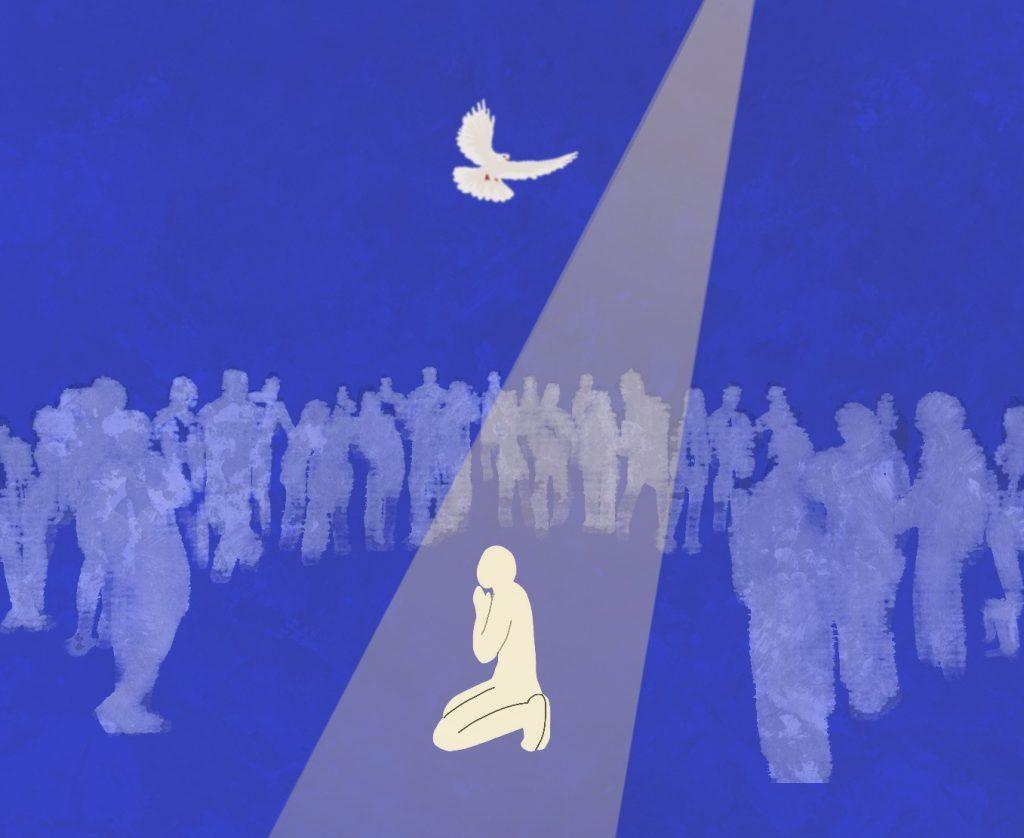Art by Autumn Hardwick
Prayer. It’s more than just folding your hands, closing your eyes and thinking — it’s a conversation.
Prayer is “a spiritual communion with God or an object of worship, as in supplication, thanksgiving, adoration, or confession,” according to Dictionary.com
People often think of prayer as something that has a beginning and an end — the Bible and I would argue otherwise. I believe prayer is a continuous act between you and God that unites you spiritually.
Why I pray
In 1 Thessalonians 5:16-18, the Bible says, “Rejoice always, pray without ceasing, give thanks in all circumstances; for this is the will of God in Christ Jesus for you.”
God is omnipresent and omniscient, which means He is everywhere at once and all-knowing, according to the Gospel Coalition. Because of this, we are in constant communication with God.
There isn’t a need to be alone or necessarily have a reason to pray. I am constantly asking, thanking and talking to God throughout my day.
It is common for people to compare prayer to a phone call, but I like to think God is always right there next to me to talk to.
When I pray, I feel a sense of comfort — like I’m talking to a friend, but better.
Prayer can offer peace of mind and can help people put their emotions into words, according to a NewSpring Church article.
Usually when I can not figure out why I feel upset, I will pray to God, talk to Him about what I am feeling and ask for guidance. Prayer makes me feel relieved and can target the cause of my emotions through prayer.
Prayer and meditation
For those who do not pray to the Christian God like I do, meditation can be used as an alternative way to find peace.
Meditation stems from practices in Hinduism and Buddhism and is still frequently used in these religions as well as many others.
In many ways, prayer is similar to meditation. While meditation does not always involve communication to a higher power, it is a way to settle your thoughts and quiet the mind.
The main difference between prayer and meditation is that prayer focuses outward and meditation focuses inward. In other words, prayer is a conversation — a cycle of asking and thanksgiving. Meditation is the action of focusing thoughts and internalizing them.
Practicing meditation and prayer together — or separately — can help reduce stress, anxiety and overall benefit your well-being, according to an Association for Psychological Science article.
It can be helpful to begin your prayer with meditation. Start by settling your mind and focusing on yourself and your emotions. Once you feel you have relaxed and opened your mind, begin communicating with God through prayer.
Combining meditation and prayer has helped me feel more grounded and spiritually connected to God. Create your own routine of mindfulness by practicing meditation, prayer or the two combined to help you stay connected to yourself, God or both.
____________________
Follow the Graphic on Twitter: @PeppGraphic
Email Lydia duPerier: lydia.duperier@pepperdine.edu


